Simplicity, but at the same time reliability! Connecting heating radiators with a one-pipe system
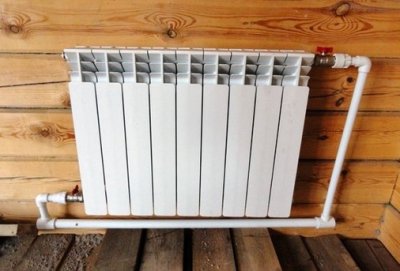
Experts may say that a single-pipe heating system is a relic of the past, however, it still remains one of the most effective ways to heat private and multi-storey buildings.
It's worth just slightly modifying the well-deserved classic, and All the advantages of a single-pipe connection will be revealed when installing heating systems: comfort, coziness in the house and the possibility of local repairs of the heating system without disconnecting the heat supply.
And also - saving money when the power supply to the area is disconnected.
One-pipe system: connection highlights and real benefits during installation
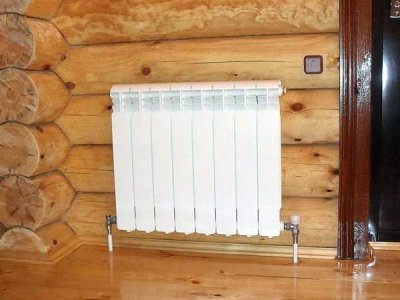
Initially, the single-pipe heating connection system was the only advantageous one: heating radiators were connected according to physical parameters "serial connection".
The choice was based on economical pricing:
- Costs were cut in half on the purchase of conductors for the coolant in comparison with a two-pipe system.
- Savings were achieved when purchasing unions, fittings, taps.
- Radiators of all existing brands were suitable for this system: from cast iron classics to “advanced” bimetal.
There were also some negative aspects: radiators, connected in series, heated unevenly, the last one in the chain did not correspond to the specified (expected) temperature parameters. This was the case until specialists discovered the principle of the "bypass pipe", known as a bypass.
Advantages of bypass
It is sometimes difficult for a homeowner to decide on the recommendation of specialists when installing a one-pipe heating system about installing a bypass. The principle is simple: a bypass pipe is included in the design (this is the bypass), which will save material resources, and allows for local radiator repairs without turning off the entire system. The latter is relevant for owners of private houses and for residents of typical multi-story buildings of the last century.
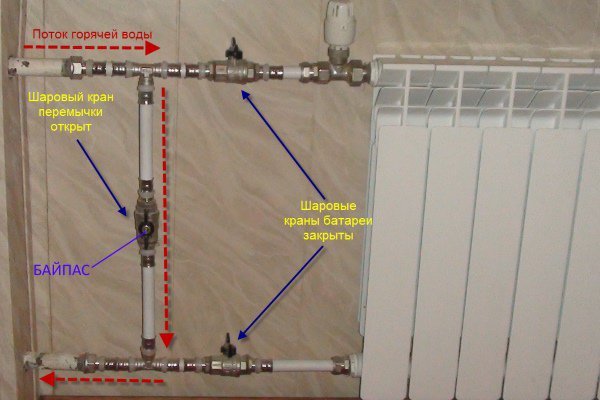
Photo 1. Radiator connected to the heating system. The arrows indicate the location of the bypass and ball valves.
For owners of large living spaces with a single-pipe heating system, it will be advisable connection of the "bypass". It is a section of pipe that is installed in close proximity to the radiator. Pipe diameter one position lower than the main pipeline cross-section. This is explained by the fact that when the carrier is supplied, water prefers to rush through channels of a larger diameter. Thus, it becomes possible to begin repairing leaking radiator units painlessly for the heating of the house.
A gravity system does not provide a comfortable (and adjustable) temperature in living spaces, which is where a bypass is needed. Craftsmen install a bypass pipe with a circulation pump and temperature sensors located in it. It’s not a problem if the power supply is interrupted — The bypass will direct the water flow according to the gravity principle and in emergency mode. The bypass pipe brings savings to the homeowner up to 25% payments for electricity, alternating gravity and forced circulation of the coolant.
Attention! Install the circulation pump in the bypass pipe, adhering to the rule of "curvilinearity": The more bends, the lower the thermal conductivity of the heating system.
The bypass is “surrounded” on both sides by ball valves to protect the water supply to a specific radiator.
Correct installation of a structure without a bypass pipe
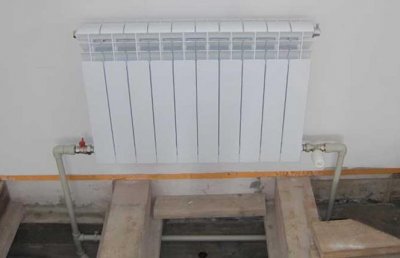
This scheme will not require parallel pipe branching., based on welding or fastening using adapters and fittings.
Primitivism in installation and some cost savings will subsequently bring many problems to the homeowner. The most expensive item is the shutdown of the system in case of local leaks of the pipeline or radiator.
Tools
To organize heat supply, you will not need to purchase special sets of tools - the task will be handled by plumbing fixtures and the keys that a home craftsman has. Add only specific tools to your home kit:
- special keys for connecting union nut sockets;
- tools for screwing adapters;
- Torque wrenches for "delicate" parts.
Reference. Professionals advise against purchasing expensive equipment for joining parts with a union nut. The task is handled by open-end (or adjustable) wrench with pliers. The first one holds, the other one twists.
Schemes and connection methods
With a single-pipe heating connection scheme in housing Several schemes for obtaining energy from a heat source are used.
- Diagonal connection is one of the effective methods. The pipes alternate with the upper and lower connections within the boundary of one radiator: the heat input is at the upper branch pipe, the output is at the bottom of the battery. This system has proven itself well when connecting radiators over 10 links, the batteries heat up evenly.
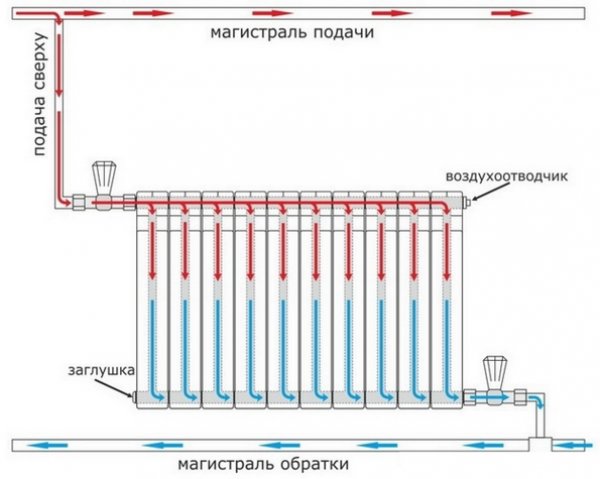
Photo 2. Connecting a heating radiator using a diagonal scheme. The hot coolant is marked in red, the cold one in blue.
- According to experts, the lower trim is less efficient in terms of thermal conductivity., but is used in closed heating systems, when the pipes run horizontally from the boiler and are hidden under the floor.
- Vertical connection is based on the installation of a riser in the boiler area, to which the remaining elements of the heating structure are connected. The advantage of this method is the absence of air locks during gravity flow of water.
- Upper wiring (inlet and outlet pipes are installed at the top on different sides) is used in radiators of a special design, where direct flow is excluded. The carrier goes down the first section and passes through the remaining links.
How to properly connect radiators
When installing a heating system, it is important to install the radiators correctly, securing them to the wall under the window openings. According to the standards, the distance from the floor and window to the battery cannot be less than 10 centimetersThe gap from the wall is allowed to be half as much.
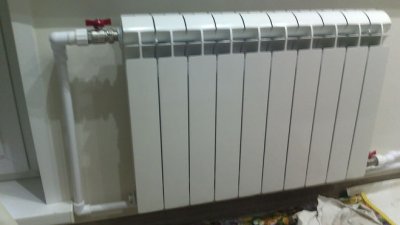
To secure these elements Use 3 brackets for each unit: two are attached at the top points, one at the bottom.
Level the surface of the battery vertically; a slight decrease is allowed horizontally so that air does not accumulate in the upper part.
Achieve such a level that the radiator caps directly approach the location of the pipes. Screw on each battery Mayevsky crane (at the top point), mount the plug downwards. If necessary, install heat regulators.
With the help of adapters (futorok) transitions from right to left threads are provided, from pipes of different diameters. For connecting batteries to the pipeline are sold sets with couplings, adapters, couplings and taps. The kit is supplemented with gaskets that do not require additional waterproofing. Sometimes, when threading pipes and adapters, gaskets do not help, then use flax soaked in drying oil.
Important! Start screwing on the adapters by cleaning the pipes and joints: No paint is allowed at the joints. Sand down to bare metal. Otherwise, the paint will peel off over time and the joint will leak.
Why is it recommended to install taps?
When installing the system yourself, do not skimp on installing taps. — otherwise, minor repairs will have to be carried out by disconnecting the system and cutting the pipeline.
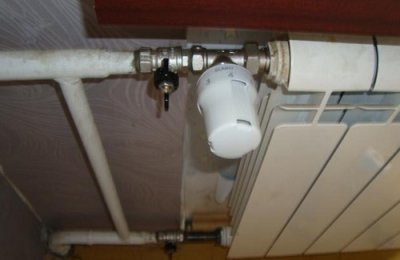
Install taps on the coolant supply and return. These can be ordinary ones. ball valves with union nut. They are screwed on using union nuts.
Instead of ball valves, experts recommend installing radiator valves, and then it will be possible to regulate the water flow by changing the temperature in the batteries.
Install the valves by screwing in union nut.
Reference. Do not use excessive force when screwing in adapters, use with a torque wrench. Flax tow or fum tape can reduce the gap between the pipe and the adapter.
Useful video
Watch the video, which demonstrates how to connect a radiator to a one-pipe heating system.
System efficiency
With minimal costs for installation of a single-pipe heating system, it can be made more efficient. Connect the batteries diagonally, install a circulation pump and cut a bypass into the system.
Complete the pipeline with a system of taps and valvesto regulate the temperature in all living areas of the house, carry out repair work, and reconstruct the system without turning off the heat.







